Just the mention of the word ‘cloning’ conjures up science fiction idioms and ‘Star Wars’ type images. Aside from the obvious science fiction connotations, there’s also a humorous side: Did you hear about the man that told his wife he wanted to clone himself? His wife responds, “Now wouldn’t that be just like you!”
There’s been plenty of opportunity for cartoonists and comedians to poke fun around this topic (example below – a cartoon from 15 years ago courtesy of comic.com). All kidding aside, it’s time to quit cloning around and get serious.
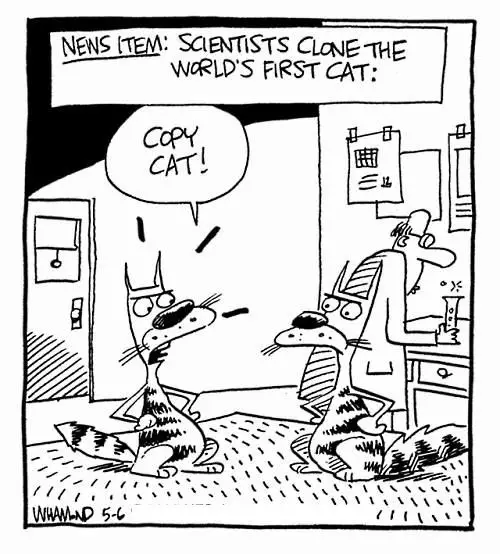 Our purpose in this post is not to debate ethical or social issues, but rather to focus on the science of cloning and illustrate how it’s done and to show how a company called ViaGen is successfully helping pet owners extend the bond they share with their pet. In this context, cloning can be viewed as a means for science to intersect with compassion and create new possibilities for grieving pet owners.
Our purpose in this post is not to debate ethical or social issues, but rather to focus on the science of cloning and illustrate how it’s done and to show how a company called ViaGen is successfully helping pet owners extend the bond they share with their pet. In this context, cloning can be viewed as a means for science to intersect with compassion and create new possibilities for grieving pet owners.
Many pet owners describe that ‘truly special pet’ who comes across only once in their lifetime. Even imagining the loss of such a companion would be devastating for many. Enter ViaGen who have a specific division just for cloning of pets. We had the opportunity to speak directly with their team and found them to be extremely honest, open and most importantly cat (and dog) lovers!
[clickToTweet tweet=”Cloning your cat is a reality today. Read this amazing story.” quote=”Cloning your cat is a reality today. Read this amazing story.”]
OK, so what exactly is a cloned cat?
ViaGen conveniently has the following response posted right on their website:
We know that many cat owners have questions about cat cloning. A cloned cat is simply a genetic twin of your current cat, born at a later date in time. Cat cloning does not change the genetic make-up of your cat and does not involve any genetic modification. Your cloned cat will share many of the most important attributes of your current cat, including appearance, intelligence and temperament. Your cloned cat will be just as healthy and live just as long as your current cat, and is no more susceptible to health issues than any other cat.
ViaGen brand themselves as ‘America’s Pet Cloning And Genetic Preservation Experts’ and they produced this short animated video (below) to illustrate how their process works.
How Pet Cloning Works
A great overview, but we still had questions so we contacted Melain Rodriguez (ViaGen’s Client Service Manager) and she was kind enough to answer them.
But first (because we know you’re curious) we wanted to share this gorgeous photo of Tobey Jr. – he’s one of the recent members of the ViaGen Pets family. Tobey Jr. is a cloned domestic short hair cat who was born on January 2, 2016. His owners prefer to remain anonymous so we were not able to contact them. He just celebrated his 1st birthday earlier this month.
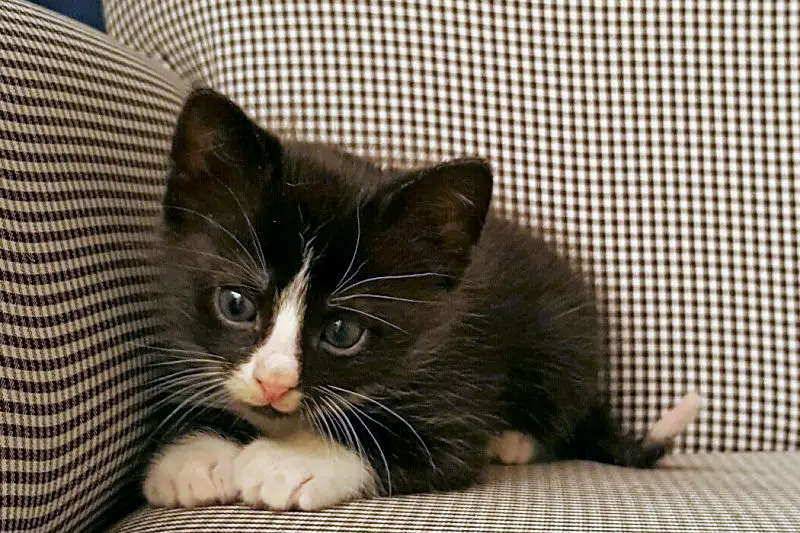
What a cutie huh! And yes, he looks almost identical to his donor Tobey. Keep reading for another incredible clone story.
In the meantime, following are a summary of our questions and ViaGen’s responses:
Q: When did ViaGen first start doing Genetic Preservation (GP) for pets?
ViaGen began in 2002 as a livestock cloning company. Since then, we have offered cloning service for cattle, pig, and horses and have preserved cell lines for those species, as well as for dogs and cats, through our Genetic Preservation (GP) service. In 2015 we expanded our cloning services to include cats and dogs and our first cloned kittens were born in the fall of 2015.
Q: Are you able to share any numbers?… e.g. how many GP clients have already signed up?
We have several thousand Genetic Preservation clients and dozens of pet cloning clients.
Q: Is the harvesting of the embryo from another cat safe to them? (i.e. is the donor cat harmed?)
Oocytes (eggs) from donor cats are used to produce the cloned embryos. ViaGen sponsors spay clinics around the country to fulfill our oocyte needs. We harvest the oocytes from the ovaries that are removed from the female cat during the routine spay procedure.
Q: How long does the GP process take?
After we receive the pet’s biopsy samples, it takes approximately 1 month to culture the cells. We culture millions of cells, and then these cells are cryopreserved and stored in vials in liquid nitrogen in two separate locations for extra security.
Q: Is there any limit to how long someone can keep their pet’s embryo frozen?
The GP process stores somatic cells, not embryos yet at this point. These stored cells can be frozen indefinitely, and can be used for cloning at any point down the road.
Q: How long does the actual cloning process take?
The timing of the cloning process can vary, depending on the current waiting list. Right now, our feline wait list is about 6 months. A signed cloning agreement and cloning deposit payment reserves your spot on the wait list. Once we get to your spot on the wait list, after about 6 months, we’ll produce cloned embryos and transfer those embryos into a surrogate cat.
Once a pregnancy is established the gestation is just a little over 2 months. After birth, the kitten(s) stay in our care for about 9 to 12 weeks. So, from start to finish it takes about 1 year. We anticipate our 6 month wait time to decrease within the next year.
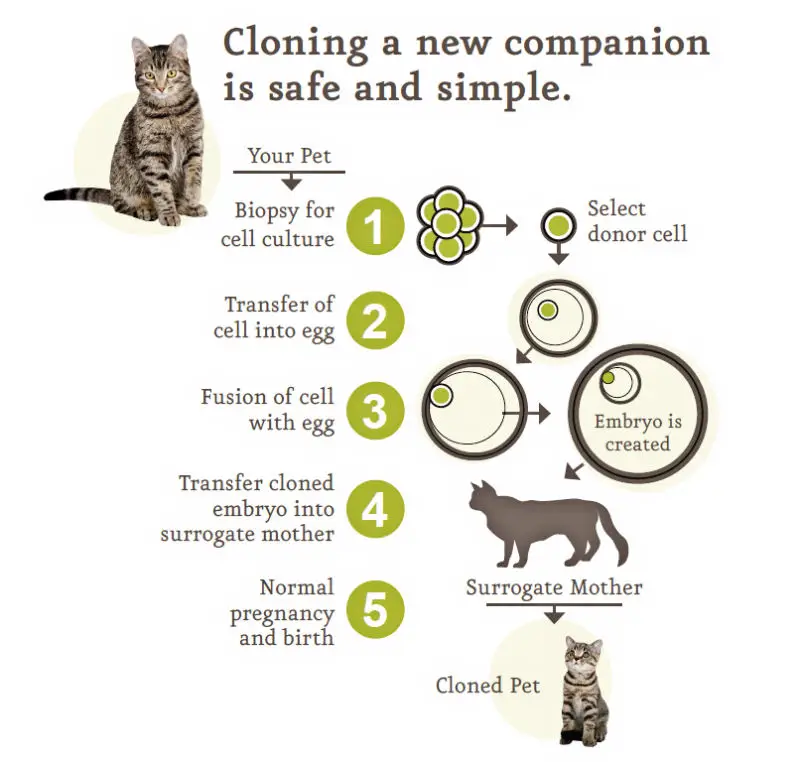
Q: Is the surrogate cat harmed in any way?
We make every effort to ensure the comfort and health of all of our surrogates. To that end, we continue to improve on our procedures to make them as non-invasive as possible. Our surrogate mothers do not undergo anything that a cat in a pet household would not also encounter in the course of her life. We provide an exceptional diet, social interaction, environmental stimuli, and round-the-clock access to veterinary care.
Q: Does the process only yield 1 kitten in the litter? (i.e. what if 5 kittens came out?)
We do transfer multiple embryos into the surrogate so, similar to IVF, there is a possibility of more than one kitten being born, but litter sizes are typically small, with just 1 or 2 kittens.
Q: What’s been the general reaction when people find out you can clone their pets?
Surprise, disbelief, hope, comfort, and lots and lots of questions. Because we are the only feline cloning company in the world, most folks are unaware this technology is available. The genetic preservation is preferably done while your pet is still living, so if a pet parent is interested in preserving a cell line for potential cloning, we suggest they talk it over with their veterinarian and make arrangements for the simple biopsy procedure. If the veterinarian has any questions about the procedure, we are happy to speak with them and walk them through each step of the process.
Q: You shared some actual cloned success stories on your website…are these clients thrilled?
Yes, the clients are absolutely thrilled. I have had the honor of being present for every cloned kitten delivery so far, and it is truly an amazing experience and, as you can imagine, a very emotional experience as well.
A Remarkable Story of Twin Clones
The ViaGen team were delighted to put us in touch with one of their clients (a lady named Dawn) who we had the privilege of speaking with. She cloned her Siamese cat in 2015 and 2 cloned kittens were born on Oct. 5, 2015. See photos below – for those who don’t know, Siamese cats at birth are albinos (hence the all white coloring).

Dawn is an animal advocate who regularly helps out at local shelters and rescue sites. Cloning wasn’t really something she had considered until her beautiful 8 year old Siamese boy (Dylan) suddenly and unexpectedly passed away from a heart attack. Dylan was one of those incredible ‘once in a lifetime’ pets and his sudden passing was devastating.
As fortune would have it, her husband was intrigued by the cloning process and had actually done some research into ViaGen several months earlier. She told us how she raced to the vet with her dying Dylan in her arms but he had already passed before she got there. The rest happened very quickly – they immediately contacted ViaGen who jumped into action and were able to harvest the DNA from Dylan in time to keep it intact and viable.
The ViaGen scientists implanted cloned embryos into a surrogate tabby cat and a couple of months later she gave birth to 2 beautiful Siamese kittens. Let’s call them Dylan 1 & Dylan 2. They were identical in every way compared to the original Dylan (see below).
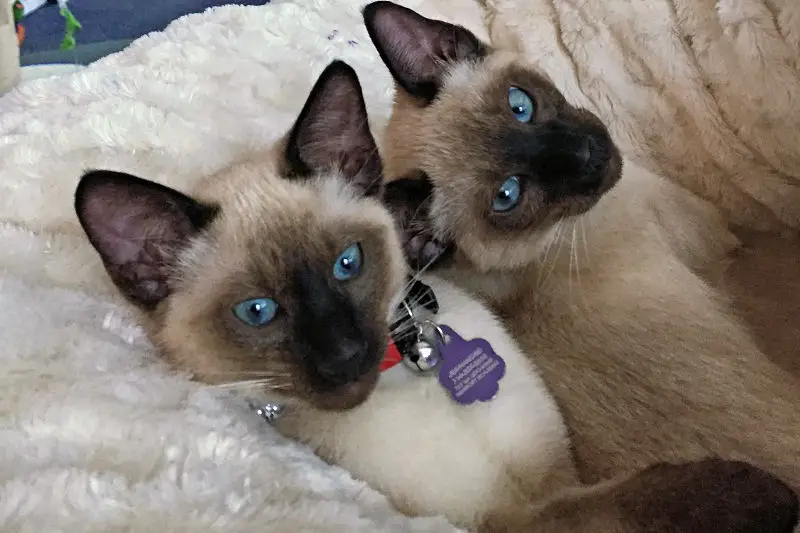
At 8 weeks they came home and today are beautiful, healthy and active boys. For personal reasons they each live with a different family member but when we spoke to Dawn she told us some amazing things about her new Dylan.
As soon as he came home he immediately knew their house and their dog instantly recognized him as if they had never separated. She observed what looked like a kitten with the memories of her 8 year old Dylan and it seemed that Dylan Jr. exhibited all the same behaviors as Dylan Sr. did.
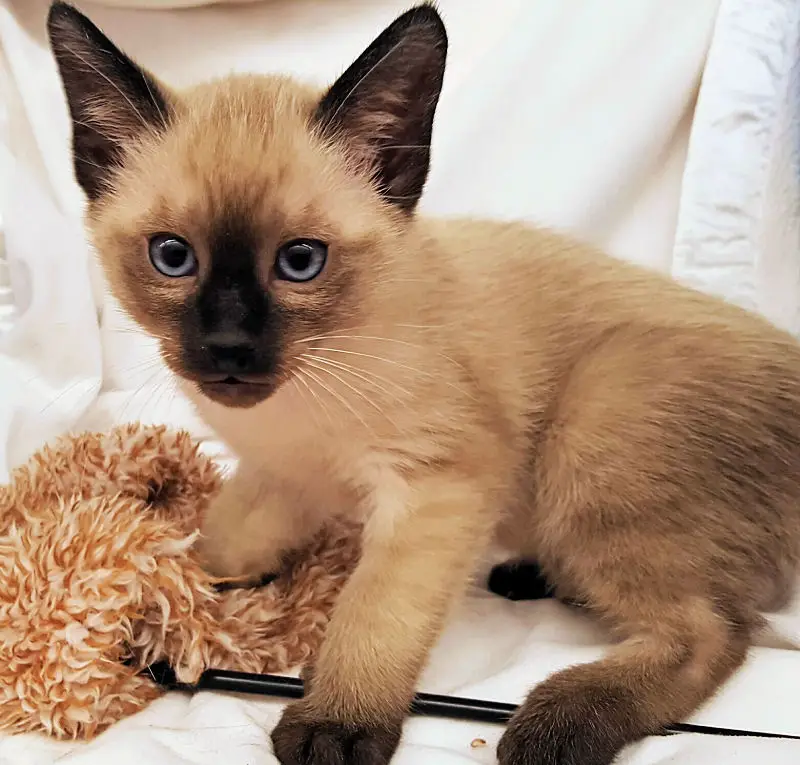
Dawn told us that on the following morning after he came home, Dylan Jr. jumped on the bed and began licking her nose (this is what Dylan Sr. used to do). She also had a routine with Dylan Sr. that he loved to jump into his pushcart when she said “time to go shopping”…sure enough without any training Dylan Jr. does the exact same thing. Quite remarkable huh?
Dawn openly admits that it’s truly incredible at how identical her new Dylan behaves to his clone dad whether it’s doing simple day-to-day routines or observing his loving relationship with their dog. Dawn had nothing but praise for the ViaGen team and feels blessed every day to have her sweet Dylan back.
Summary
The issue of pet cloning might be controversial for some but it’s real and it’s here today. Many thousands of clients have already had their pets’ DNA stored with ViaGen for possible future cloning. Check out this short video to understand ViaGen’s perspective on Genetic Preservation and their cloning service.
It is indeed a brave new world. We are fascinated by the science and the possibilities. Tell us what you think by dropping a comment in the box below.
Q: Would you ever consider cloning your cat (or dog)?
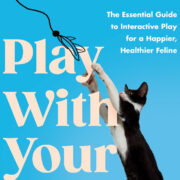
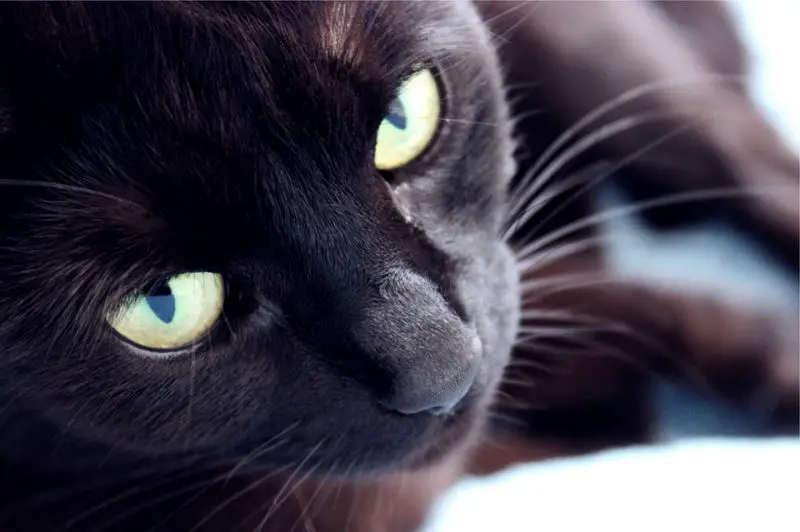
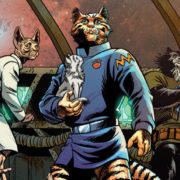
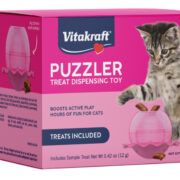

Yes I would. My Snoball is the sweetest call . How much does it cost?
25k for a cat and 50k for a dog
Oh I would love to havey Lola back she was poisoned it broke my heart to loose him he was a munchkin if I had the money I would clone him for sure
In my own personal opinion I would not. With all of the cats available for adoption I would rather give a cat stuck in a shelter a better life than resurrecting my old cat that already had one. As I said just my opinion but I do think its amazing how far technology has come.
I do respect your opinion and i share it as I have 3 rescued cats however I’m in a position right now that I am considering cloning more than anything to preserve his DNA, My cat has been in my life for 8 yrs it belonged to a friend before me. He came to me in a period where I was going through the toughest test life could give me “Cancer” Angel which is his name, was by my side every step of the way. He has been by my side since that day. I feel like I can have a connection with other animals and like I said I have 3 rescues but i would love to preserve that DNA because a cat as special as him deserves to continue being a part of our world. I don’t have the money to waste on this but I will be doing it .
I will be banking a tissue sample from Mr. Kuro the next time he visits the vet. When I have the extra money I will pay the up-charge to get his cells preserved indefinitely. Hopefully in the future the cloning price will be accessible. I justify this by extending a personal promise made to him during a similar dark time as Anabel posting above. I have a 20 year old feline who can still jump on the kitchen counters to steal left-overs. A cat who is most content sitting outside watching the world go by. One who was born wild and then as a young adult disappeared into the wild again, only to come back. As a scientist, the cloning process presents no harm. As a person who wants to believe in reincarnation, I hope that our journey will be… That reminds me, vanilla ice cream anyone? Meow!
We would all love our deceased kitties back, of course! But then, and this is just my own personal opinion, I would not want to then go through the same again, i.e. the death of my furbaby eventually, and with the same cat *again*. That is the worst horror I can imagine, because I have already been through that worst horror once. And doing that over again with the same cat I would not want to go through.
Also, one of the reasons why everybody and everything dies is to make room for the next generation of people/pets/plants etc., and to give a new needy kitty from a shelter a good home is what I would rather do. 🙂
However, the whole science of cloning is absolutely fascinating, and many people will be able to enjoy their pets over again. 🙂
We would all love our deceased kitties back, of course! But then, and this is just my own personal opinion, I would not want to then go through the same again, i.e. the death of my furbaby eventually, and with the same cat *again*. That is the worst horror I can imagine, because I have already been through that worst horror once. And doing that over again with the same cat I would not want to go through.
Also, one of the reasons why everybody and everything dies is to make room for the next generation of people/pets/plants etc., and to give a new needy kitty from a shelter a good home is what I would rather do. 🙂
However, the whole science of cloning is absolutely fascinating, and many people will be able to enjoy their pets over again. 🙂
I most definitely would consider cloning my Mr Moto. He is a red shorthair cat with the most wonderful disposition. He lives with both cats and dogs and he loves them all. He is very tuned in to the humans in his life. He’s sweet and affectionate and very dog like in his personality.
I see all sides of this. I adore my cat and hate to think of a day when he’s not around so yes, would absolutely consider doing this and yet there are so many kitties who need love and good homes right now – why bring another one into the world? That all said, if its an exact clone wouldn’t those who lose a cat early – such as the woman who’s cat died early of a heart attack – experience the same early loss with a cloned cat that has the same physical makeup? I don’t see that question answered and I certainly wouldn’t want to experience an early loss more than once…
Just saw a report that horses are being cloned for $250.000 each by a company in Argentina. Primate clones are the new thing so how long before human clones? While I see no problem with cats and dogs being cloned I am worried about the path cloning is taking. We are seriously over populating our planet as is, cloning humans will just make things worse population wise.